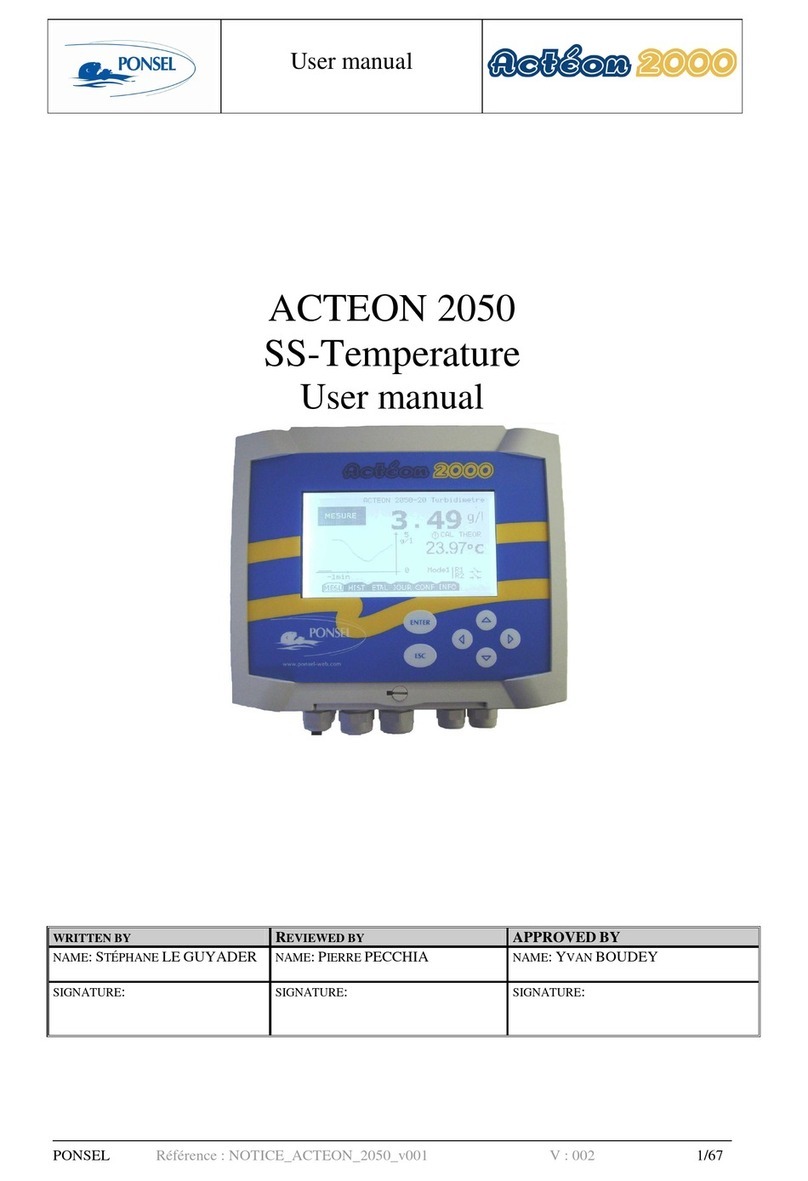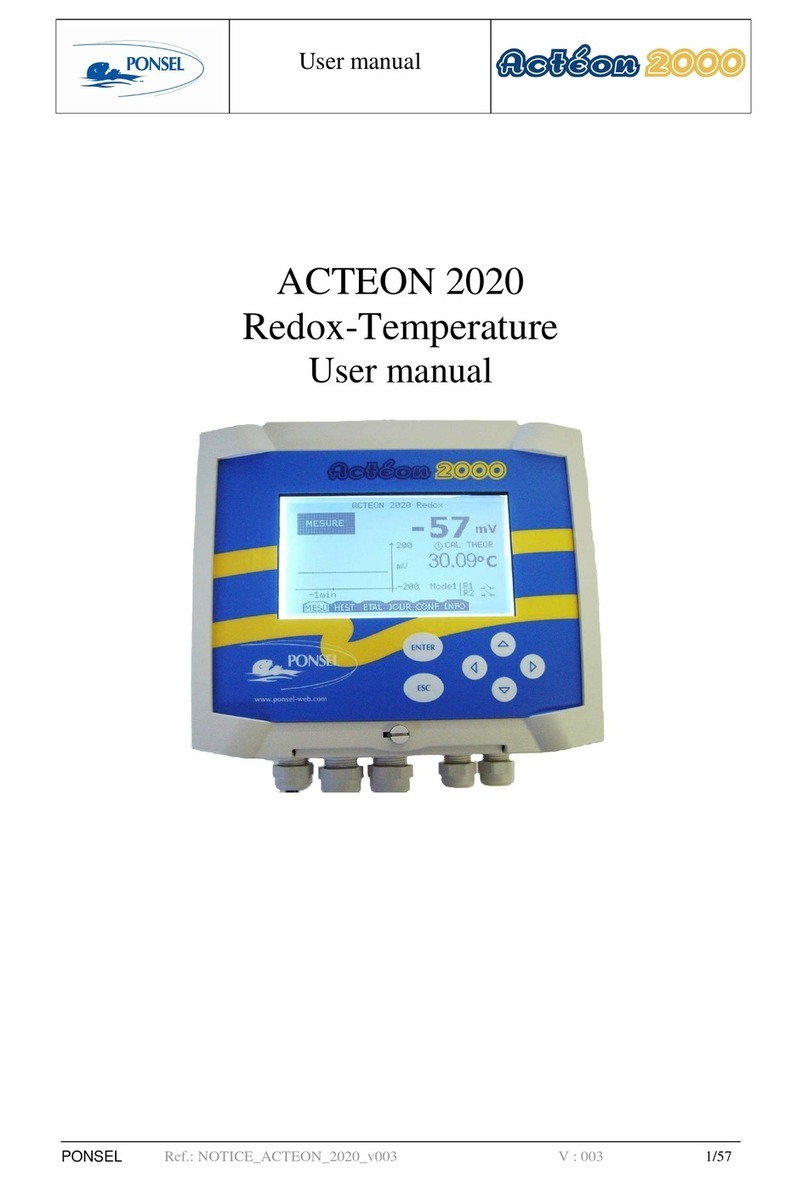
User manual
PONSEL Ref.: NOTICE_ACTEON_2030_v002.doc V : 002 3/65
CONTENTS
1THE MEASURING SYSTEM................................................................................6
1.1
The basic system ..................................................................................................................................... 6
1.1.1
An O
2
and Temperature transmitter:.................................................................................................... 6
1.1.2
DO sensor............................................................................................................................................. 6
1.2
Accessories: ............................................................................................................................................. 7
1.2.1
Consumables........................................................................................................................................ 7
1.2.2
Accessories for a tank-mounted installation without cleaning system................................................. 7
1.2.3
Accessories for a tank-mounted installation with cleaning system...................................................... 7
1.2.4
Accessories for DO and temperature sensor in-pipe installation (PONCPC-O2T-P-10 or PONCPC-
OXYT-P-10)....................................................................................................................................................... 8
2INSTALLATION ...................................................................................................9
2.1
Mounting the ACTEON transmitter box.............................................................................................. 9
2.2
Connecting the ACTEON 2030 transmitter and DO sensor............................................................... 9
2.2.1
Acteon 2030 wiring:........................................................................................................................... 10
2.3
Tank-mounting:.................................................................................................................................... 10
2.3.1
Using the stand and protective hood.................................................................................................. 10
2.3.2
Installing the sensor with a sensor-holder perch (elbowed or straight) and nozzle (ref.: PONPPCC-O
or PONPPCD-O)............................................................................................................................................. 11
2.3.3
Installing an Elbowed Sensor-Holder Perch (ref: PONPPCC-CIR) or Straight Sensor-Holder Perch
(ref: PONPPCD-CIR) on QRPM (ref: PONSPFR and PONSPFR2)............................................................ 14
2.3.4
Installing a DO sensor cleaning system ............................................................................................. 15
2.4
In-pipe installation:............................................................................................................................... 16
3ACTEON 2010 TRANSMITTER.........................................................................17
3.1
Control console:.................................................................................................................................... 17
4BLOCK DIAGRAM OF ACTEON 2030 MENUS:...............................................18
5THE MEASUREMENT WINDOW.......................................................................19
6CALIBRATING THE ACTEON 2030..................................................................20
6.1
Calibrating the sensors:........................................................................................................................ 20
6.1.1
Two point DO sensor calibration (complete calibration):.................................................................. 21
6.1.2
DO sensor slope adjustment:.............................................................................................................. 24
6.1.3
Returning to measurement theoretical calibration: ............................................................................ 26
6.1.4
Two point temperature sensor calibration (complete calibration):..................................................... 27
6.1.5
Adjusting the temperature sensor slope: ............................................................................................ 30
6.1.6
Returning to temperature measurement theoretical calibration:......................................................... 32
6.2
DO sensor calibration error message information............................................................................. 33
6.2.1
Clean water and sulphite calibration error ......................................................................................... 33
6.2.2
Calibration error during air exposure................................................................................................. 33
6.3
Temperature sensor calibration error message information............................................................ 33
6.3.1
0°C calibration error .......................................................................................................................... 33
6.3.2
Ambient water calibration error......................................................................................................... 34
7VIEWING MEASUREMENT HISTORY..............................................................35





























